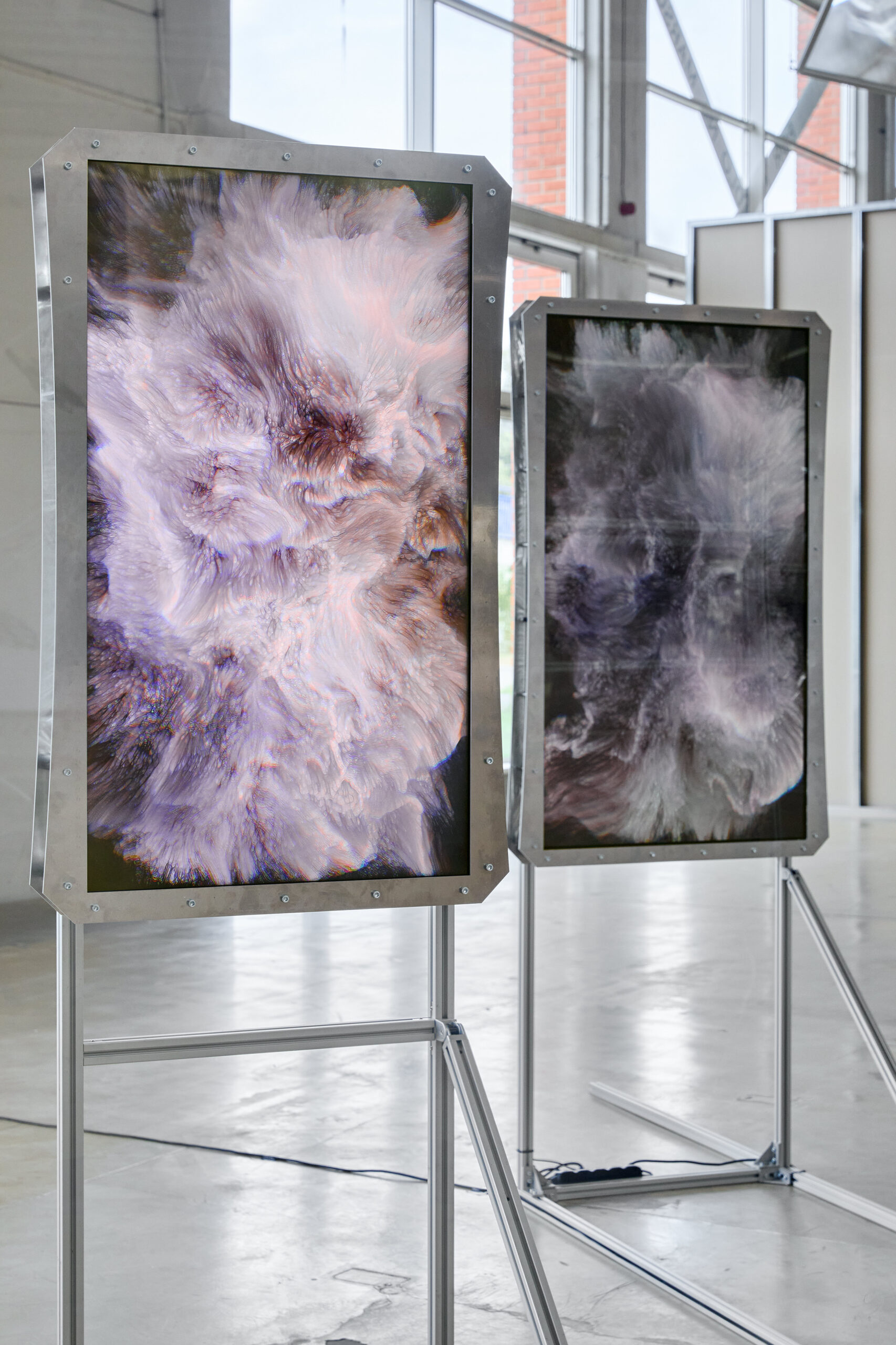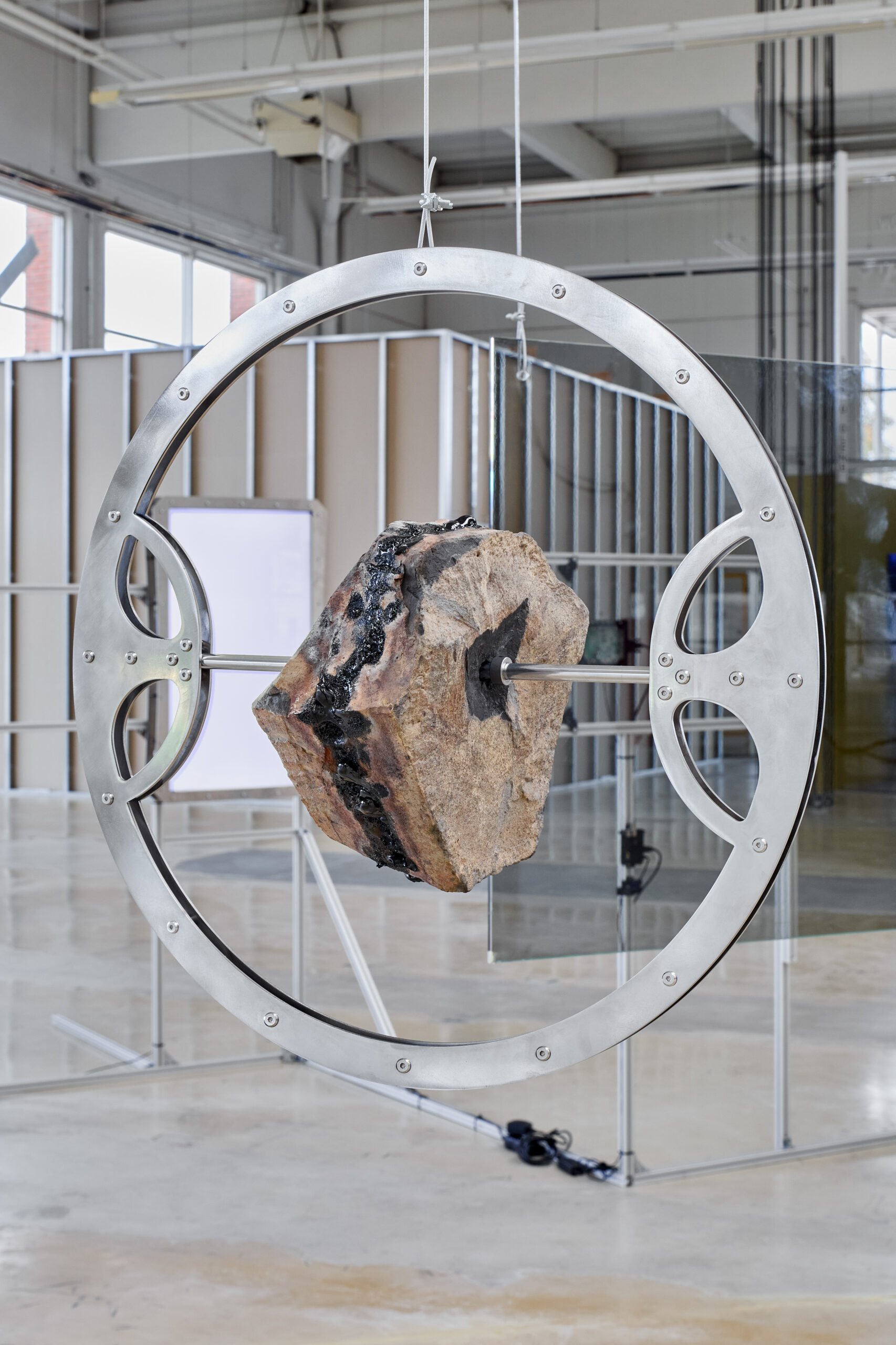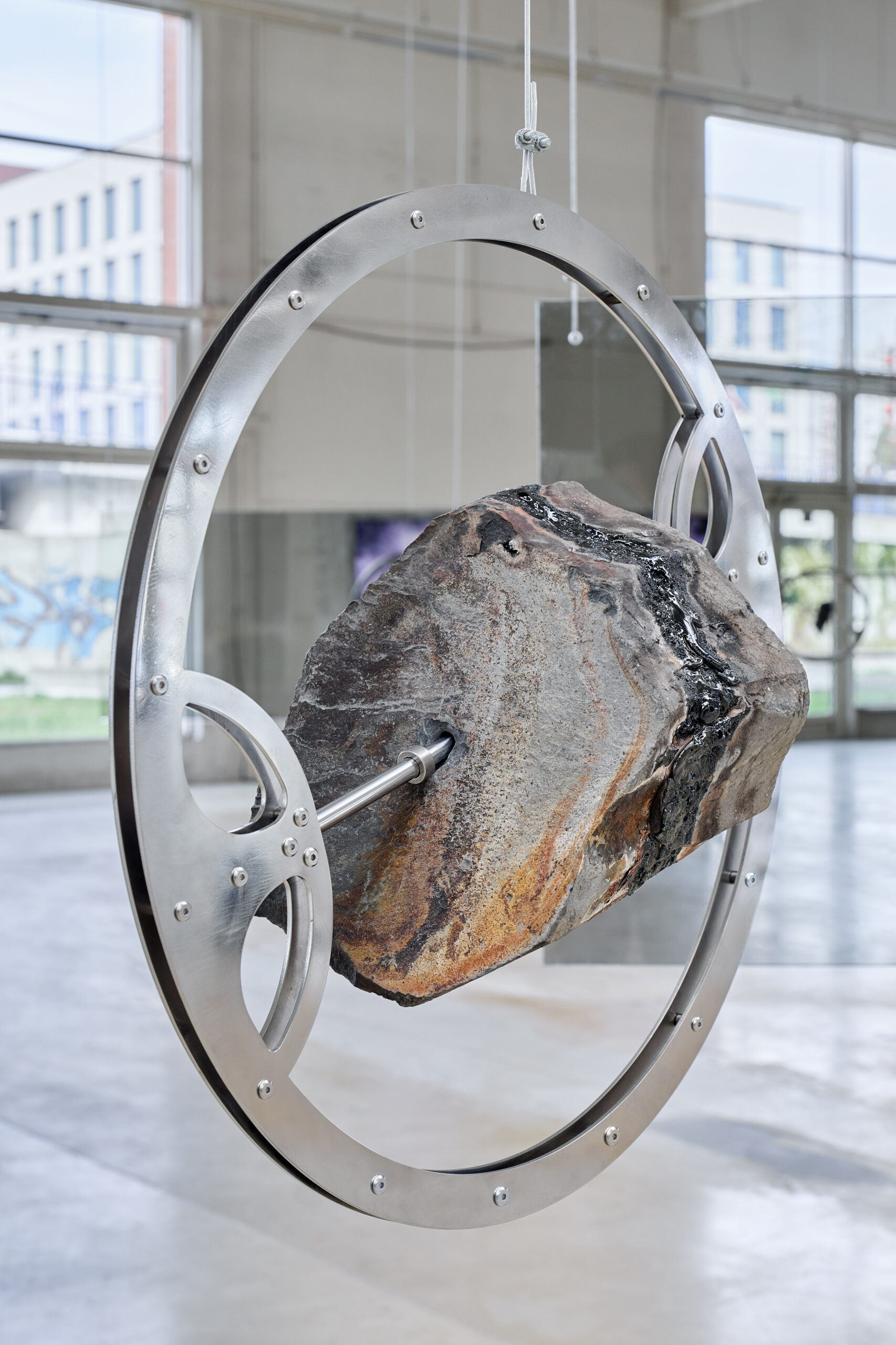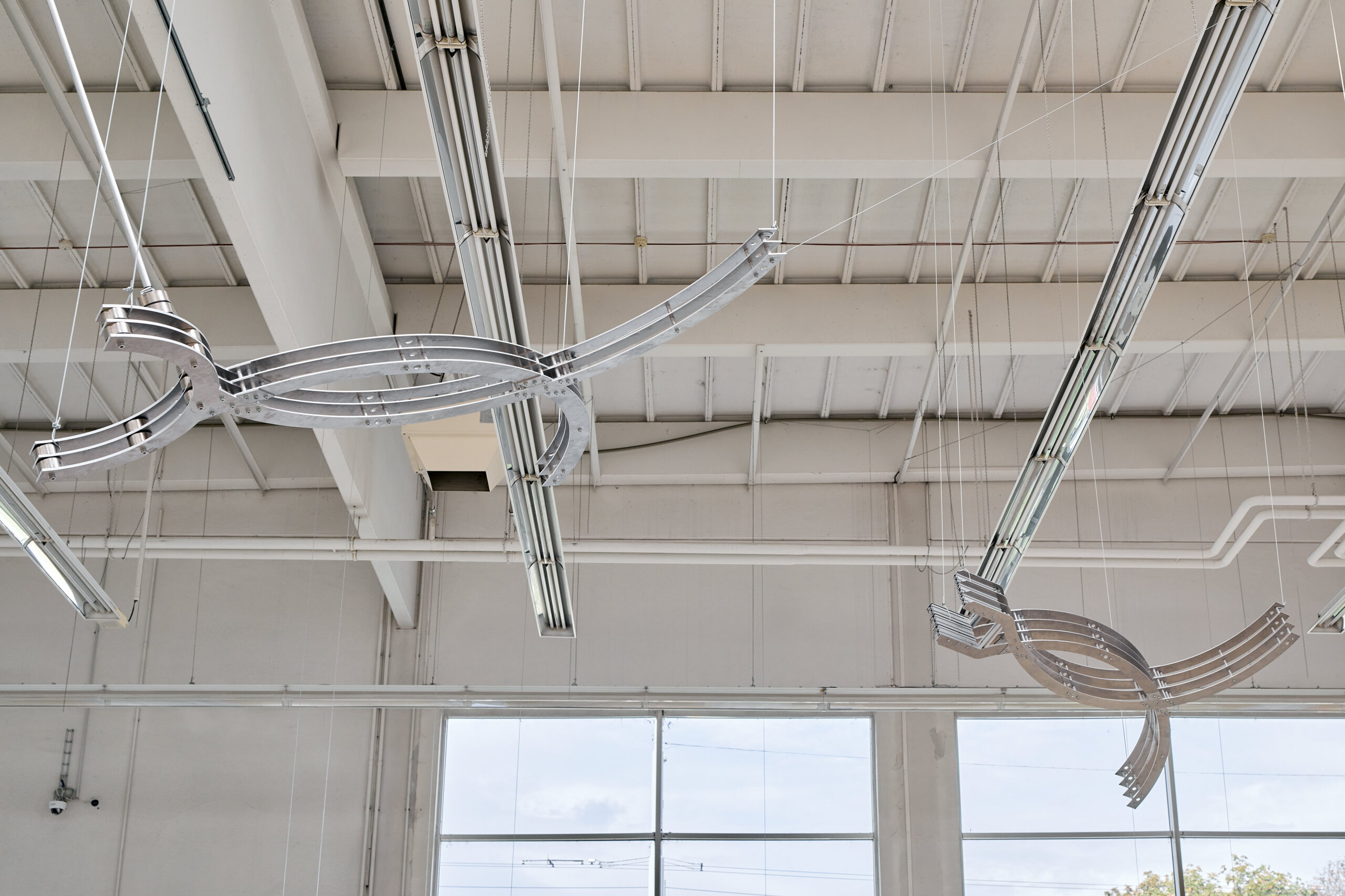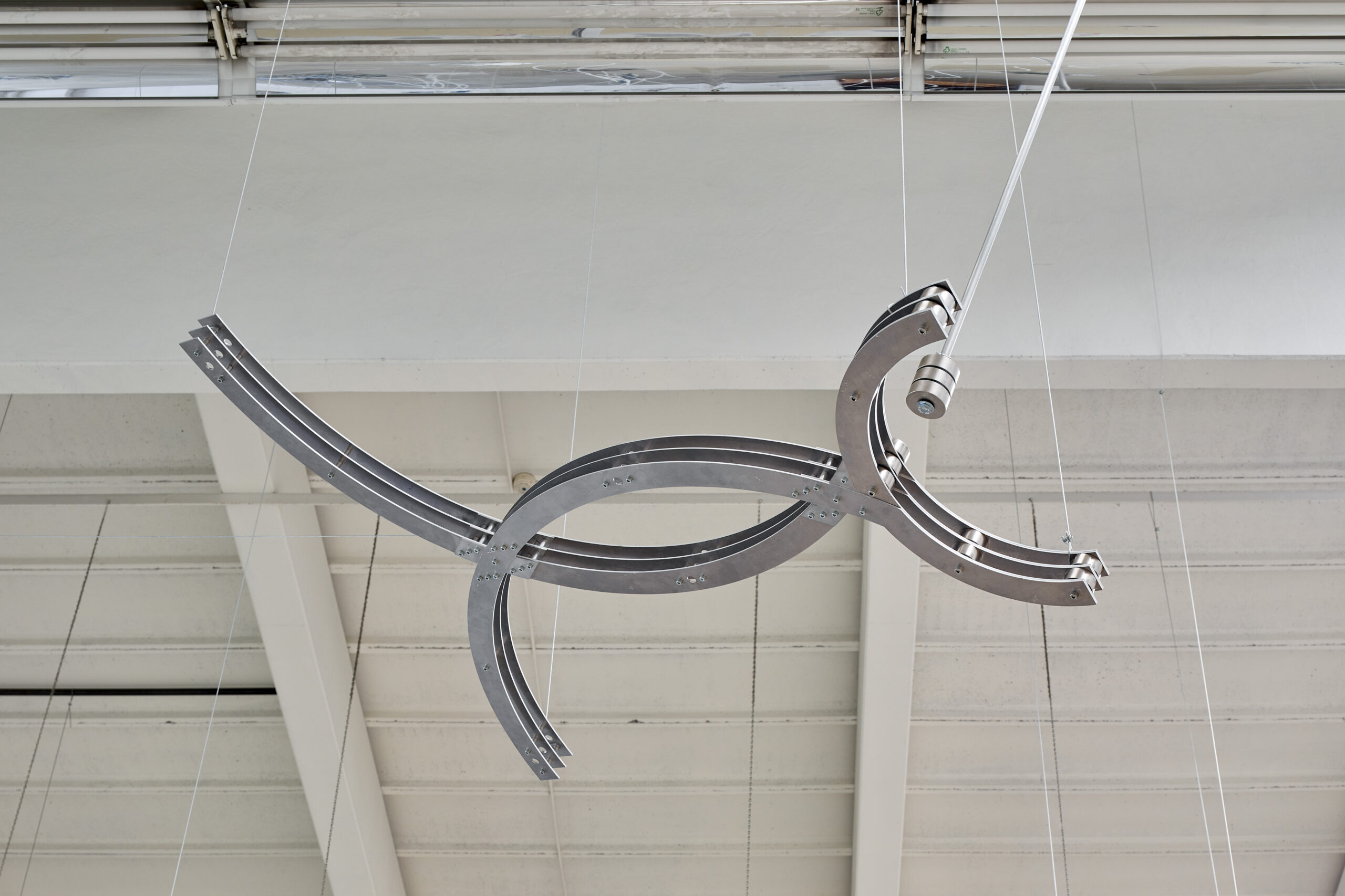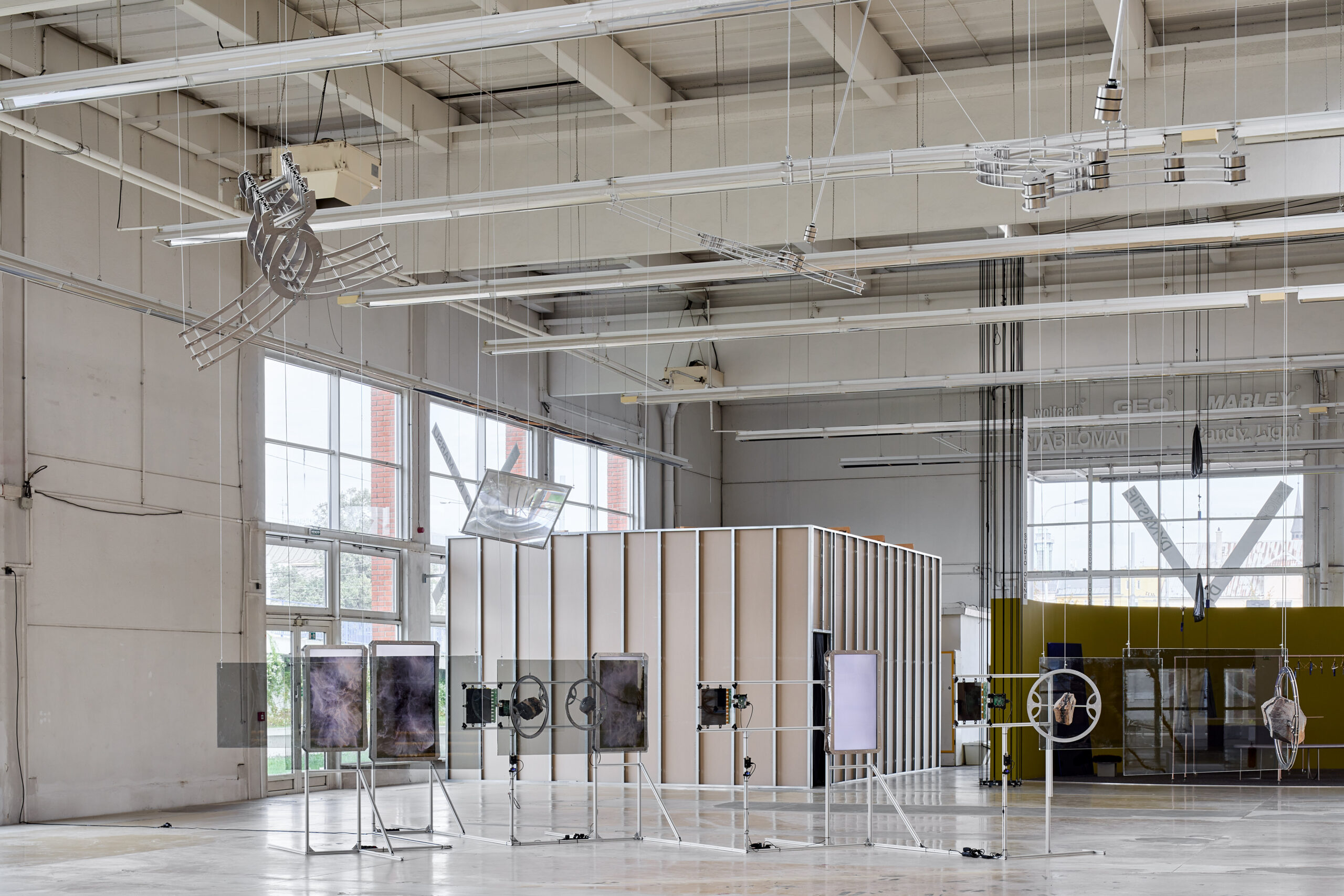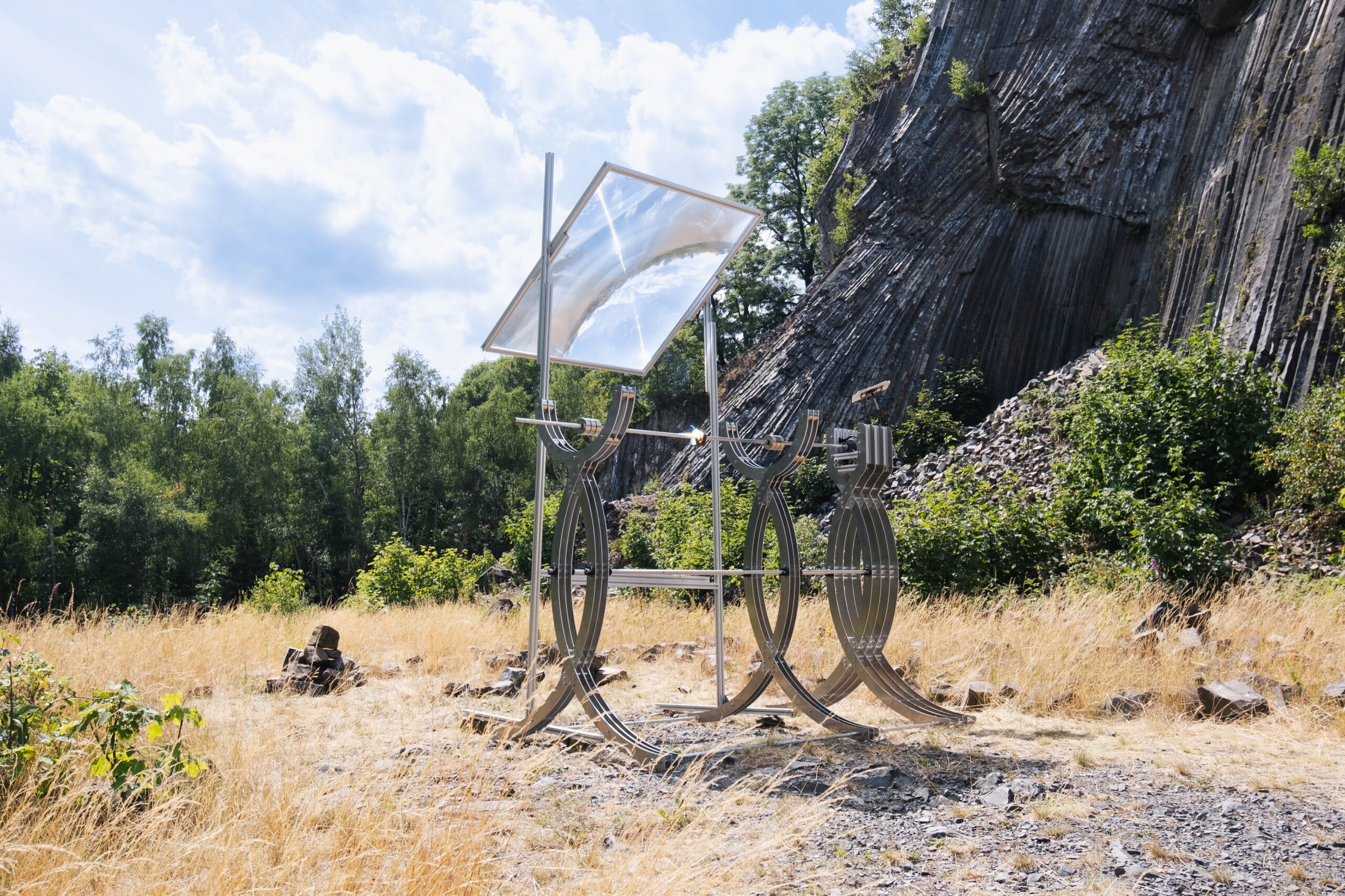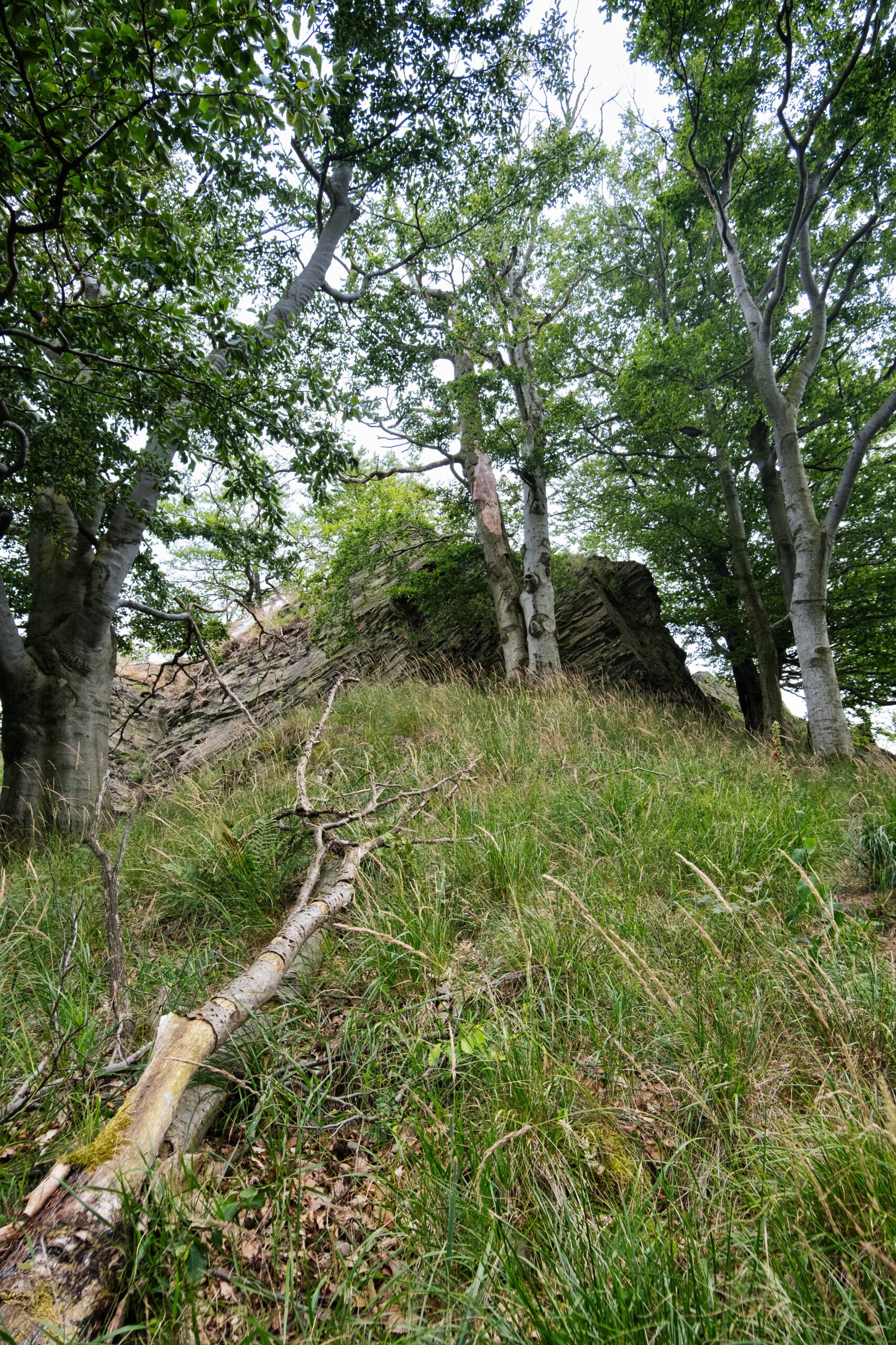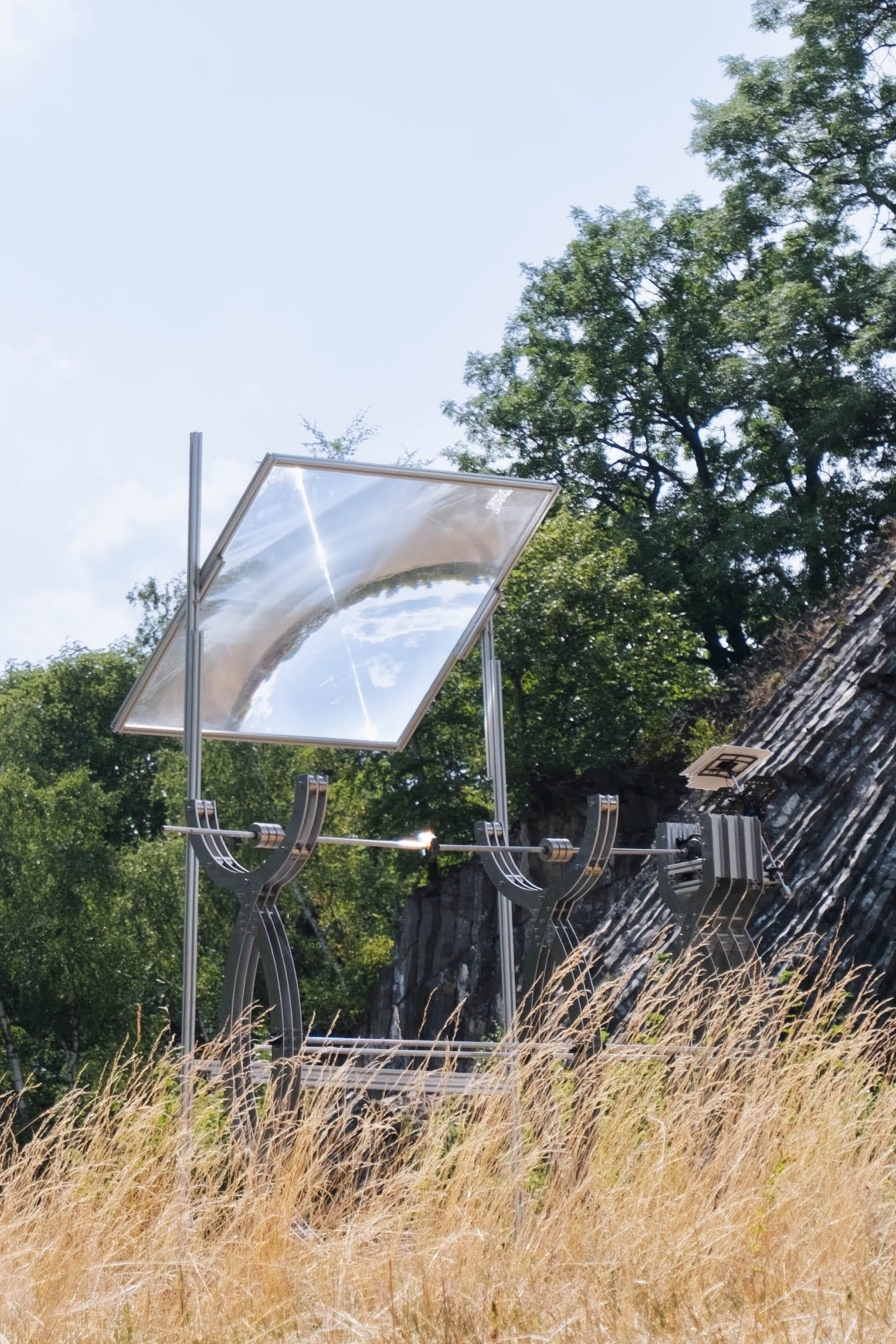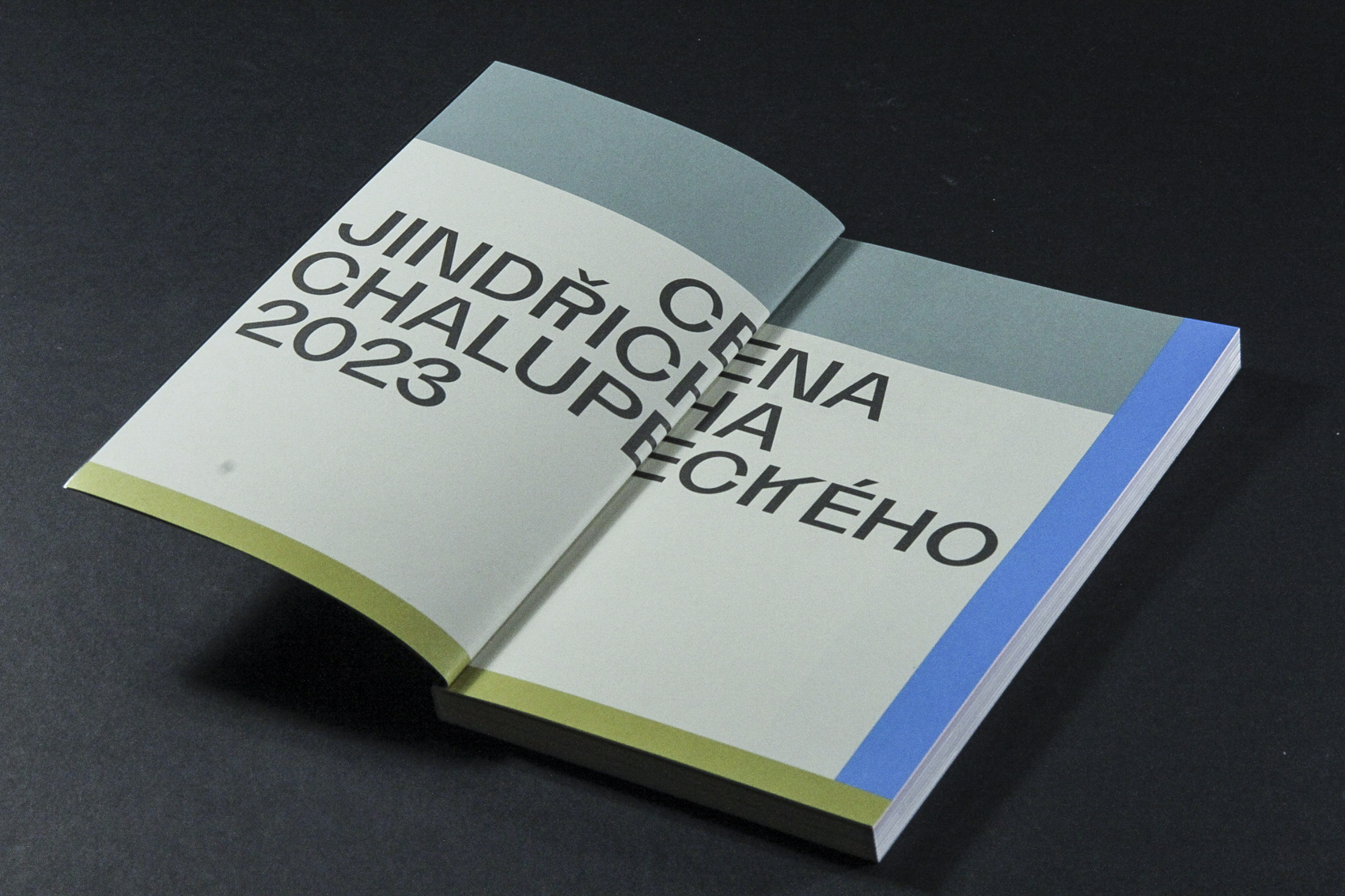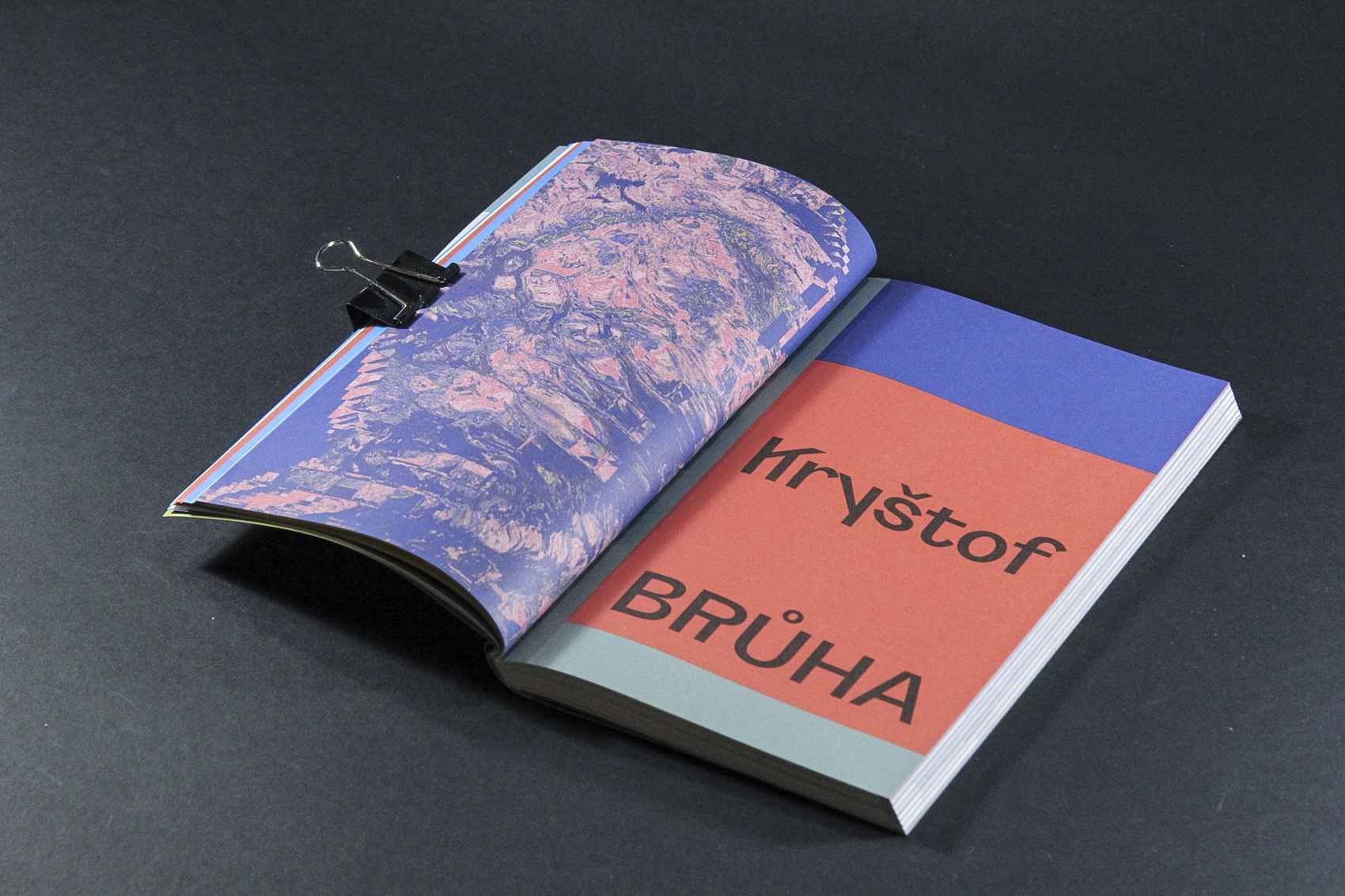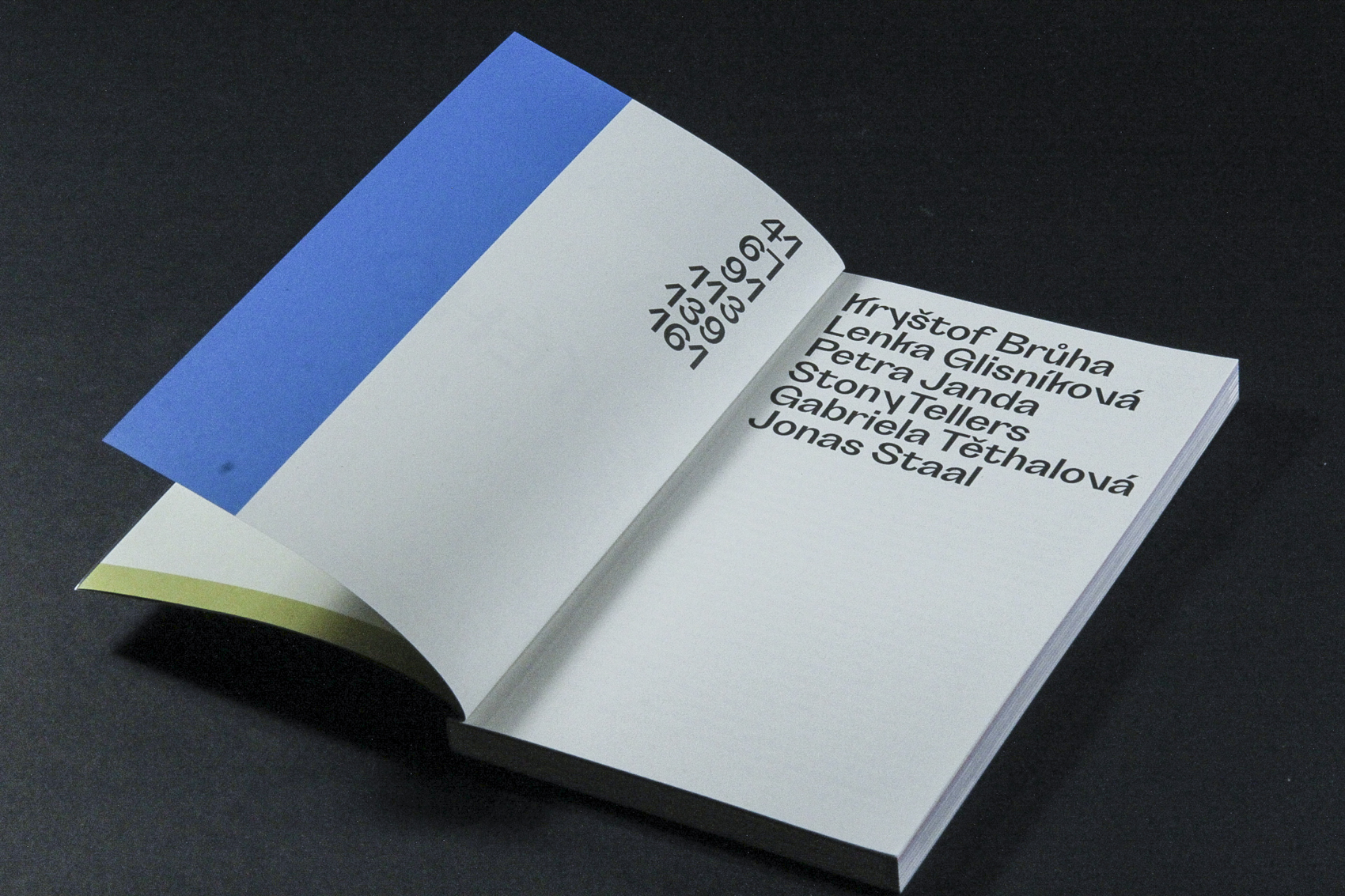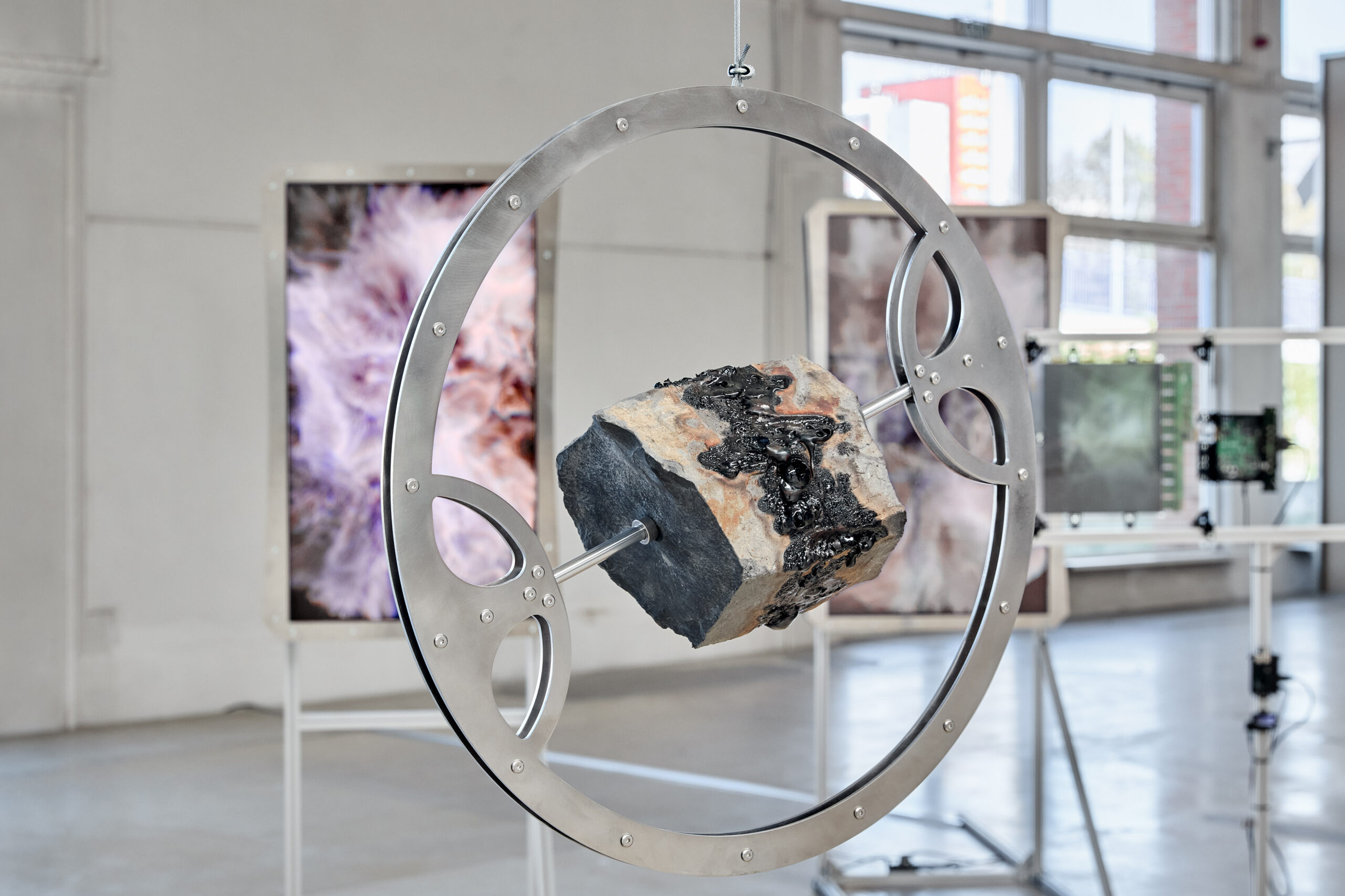
Magana Mutatio / Aurei Montis
Neither in visuality nor in materiality does the work of Brůh connect with the crises of the contemporary human world, at least not directly. He steps out of them and explores other limits. In his installation for the Ostrava Plato as part of this year's Jindřich Chalupecký Prize, he mixes several of his long-term practices (Magna Mutatio, Inter Solaris, and Aurei Montis, respectively) into one intertwined configuration. This time he uses his methods to explore the geologically specific site of Zlaté Vrch in northern Bohemia. In the installation, he primarily works with phenomena not normally visible to the eye. The first part of the individual aluminium structures with built-in transparent displays fed by an exposed base plate with visible cables - information flows - make normally sight-obscured elements visible. The displays then flow a visual intermediate state, or a state where we cannot clearly tell what it is - barely identifiable maps. The automated projections of maps of discharges, seizures, nodes, loops, taken and recorded by machines, correspond to liminal natural place-defined processes that are only remotely, if at all, historically contingently related to humans. Together with other hypertechnological objects bound to space only by neodymium magnets - an invisible force - these phenomena insert into the environment the question not why, but how. Or rather, the question that we traditionally ask when human thinking or seeing does not reach a state of understanding, comprehension, even after the artistic-technological strategy is explained by the creator or curator. Measuring, mapping and then putting into projection - the tactic of Brůh - draws attention to the physical record, memory, of everyday realities located outside the human body. While the record is empirically imaginable to humans in source code, in its complexity it is visually, and therefore by definition emotionally, unperceivable - only simulated - generative.
Neither visually nor materially does Brůh's work connect with the crises of the contemporary human world, at least not directly. He steps out of them and explores other boundaries. In his installation for Ostrava's Plato as part of this year's Jindřich Chalupecký Prize, he mixes several of his long-term practices (Magna Mutatio, Inter Solaris, and Aurei Montis, respectively) into one intertwined configuration. This time, he is using his methods to explore the geologically specific site of Zlatý vrch in northern Bohemia. In the installation he works mainly with phenomena that are not normally visible to the eye. The first part of the individual aluminium structures with built-in transparent displays fed from the exposed base plate by visible cables - information flows - makes visible elements not normally visible to the eye. A visual interstate, or a state of not being able to clearly tell what is going on - barely identifiable maps - then flows through the displays. The automated projections of maps of discharges, seizures, knots, loops, made and recorded by machines, correspond to liminal natural locally defined processes that are historically only remotely, if at all, contingently associated with humans. Together with other hypertechnological objects bound to space only by neodymium magnets - an invisible force - these phenomena insert into the environment the question not why, but how. Or rather, the question we traditionally ask when human thinking or seeing fails to reach a state of understanding, of comprehension, even after the artistic-technological strategy is explained by the creator or curator. Measuring, mapping and then putting into projection - the tactic of God - draws attention to the physical record, memory, everyday reality located outside the human body. While this record is empirically imaginable to humans in source code, in its complexity it is visually, and therefore by definition emotionally, ungraspable - only simulated - generative. zahlédnout data, it points to unrecognized or man-made dangers if it is not looking properly. The constellation of objects and screens is complemented by suspended aluminium discs, in the centres of which are anchored geological findings that do not seem to be found in nature in this form. They have also undergone a technological, also natural transformation, but more of an artistic manipulation through a kinetic mechanism (the algorithm was set according to the natural conditions of the site). By setting up a gigantic Fresnel lens, which curled and concentrated the direction of the sun's ray into the artist's chosen rock, he made a new memory record of the given natural conditions at a given time. The works - after a certain degree of revelation by sight - fluctuate in a kind of in-between spaces; the universe, the Earth - nature, man, technology. They do not establish clear boundaries, but overlapping variations, combinatorial transitions of views in time and place.
The distance of observation from space, the expanded perspective of vision that is transformed when observed over time, removes human individuals, communities, societies from the position of initiators and subsequent controllers of all events. "Showing" and "looking back" in the gallery, however, then draws the human back in as a reader. The nature of such a reader in the complex fraction approaches, or has even entered, a temporal phase of powerlessness to intervene effectively. Man, society seems to be a dream that is learning to come to terms with its impending end, which Brůha points out by observing the activity of non-human scales. The sensory experience of such changes in time is an essential element of the tendency in contemporary global art - art in the Anthropocene - to turn to other times - geological time, of which human time is merely a partial interval. Thanks to the human aspect (manipulation of the human eye by
technology) in Brůh's art we find not only the dualistic principle of society against nature, but a more extended, though temporary, new synthesis. Through his precise use of technology, Brůha makes it a horizontal link between man and nature. By gazing from orbit at the Earth, Brůha is able to condensedly allow the human senses to at least glimpse the "hyperobject" which, according to Timothy Morton, is centerless and characterized by omnipresence. It moves beyond the human scale and is definable only by its manifestations, imprints in objects, among which Morton includes the human being who, through his activity, created the hyperobject. Bruha's work is not only an imprint, but a deliberate concentration that causes perception to change as it passes between elements in the installation. The viewer, through his gaze and looking back at the elements in the work, recognizes his position on the horizontal structure with all the objects, which are characterized by an inevitable finality compared to the hyperobject, which does not have its time of demise in the tangible time of humans.
My work is based on Jan Zálešák's text: Apocalypse Me, Timothy Morton's books Hyperobjects and from a personal interview with Kryštof Brůha.
Author of the critical text Ruda Minka

























































































